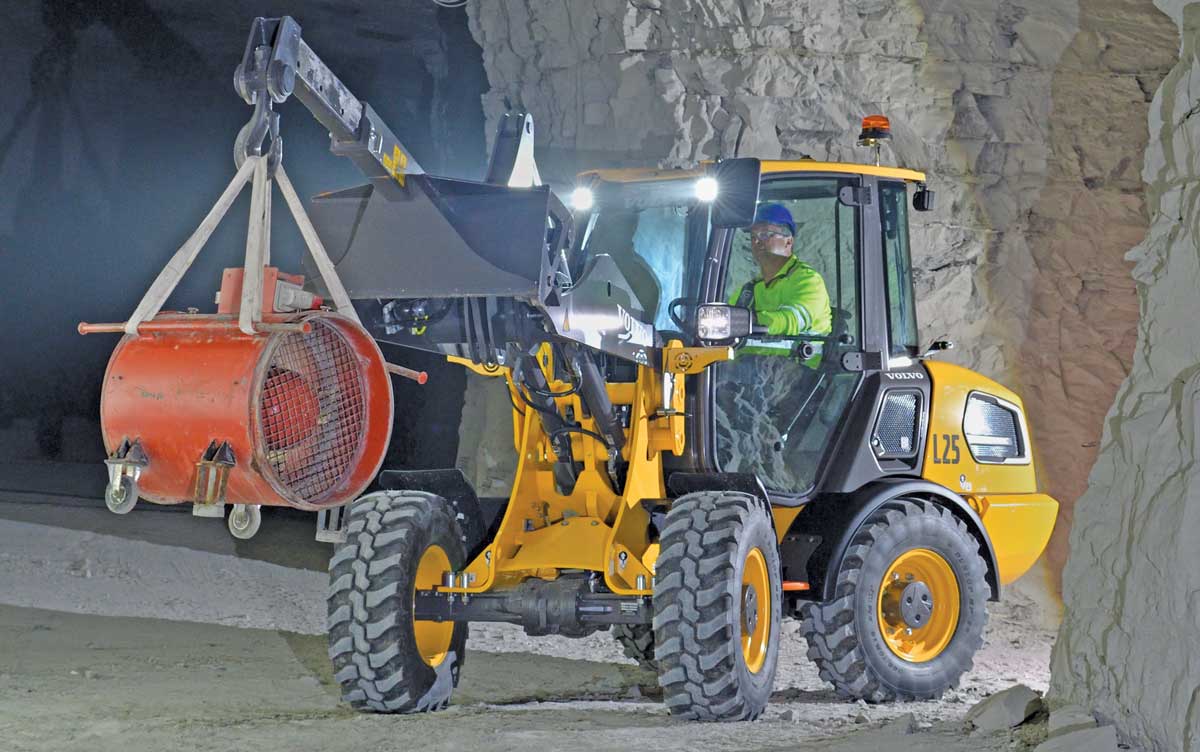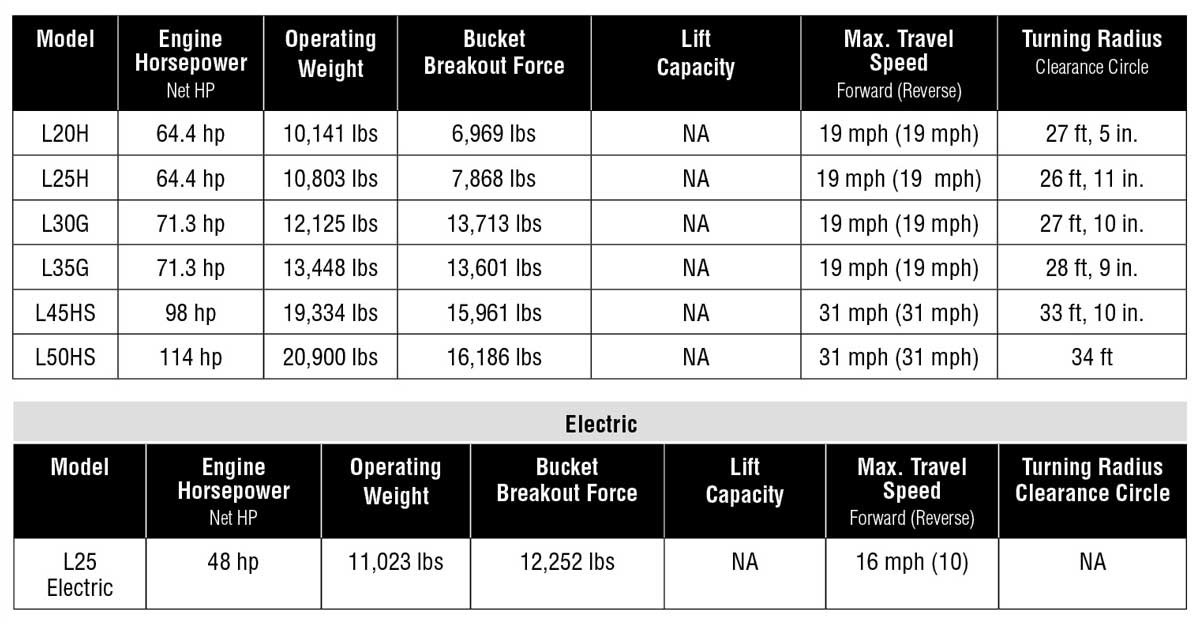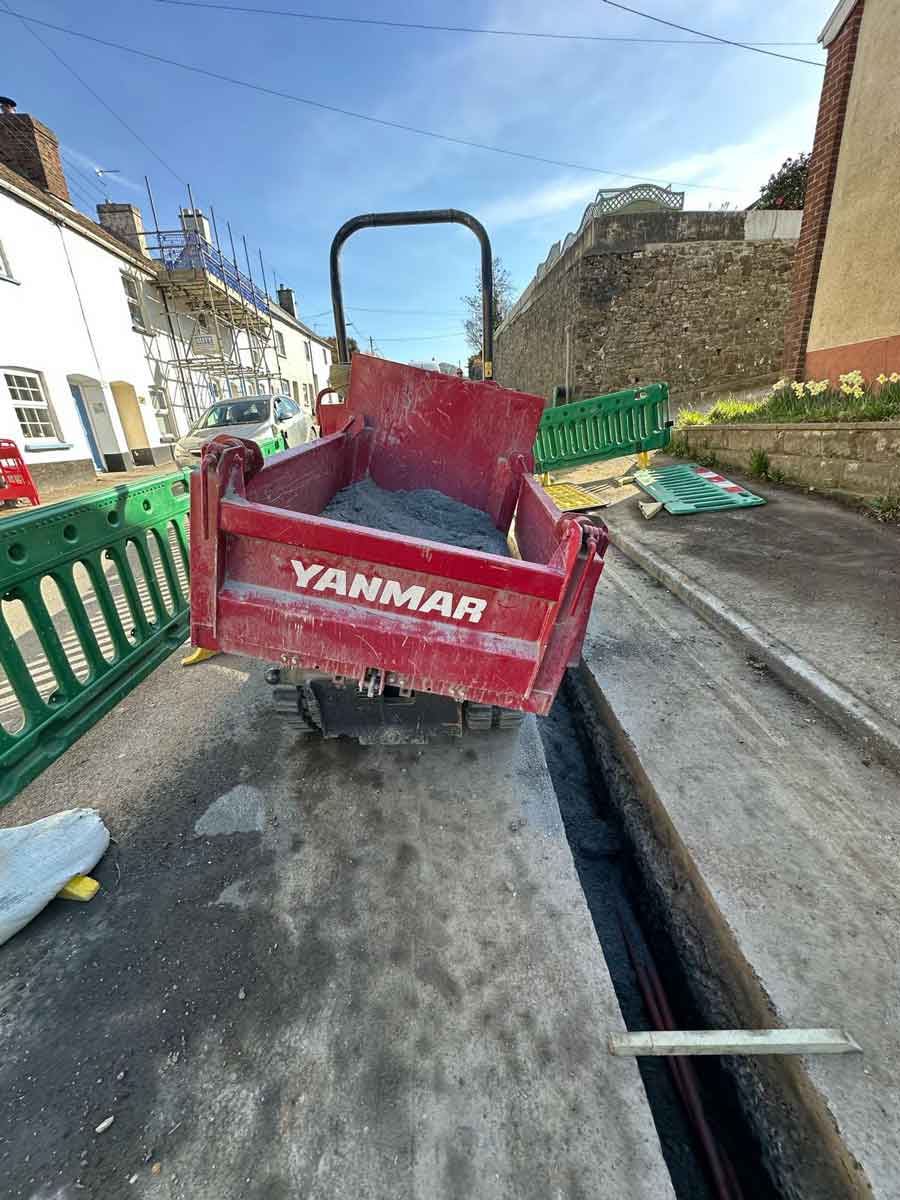Volvo Wheel Loaders Summarized — 2021 Spec Guide

Seven Models Purpose-Built for Efficiency and Versatility
Volvo Construction Equipment’s first wheel loader — and one of the first wheel loaders in the world — was created in 1954. Compact models were added to the lineup in 1990. In 2019, Volvo announced the electric L25, which is now available.
Volvo compact wheel loaders are designed to reduce cycle times and operating costs. All six conventional models — the L20, L25, L30, L35, L45 and L50 — and the new, fully electric L25 are designed with the operator in mind, including ergonomic controls and a spacious cab for easy operation and reduced operator fatigue. The machines range from 9,800 to 21,000 lbs with bucket capacities from 0.9 to 2.1 cu yds and 64 to 117 hp.
The L20 and L25 offer impressive fuel efficiency, cycle times and can reach maximum speeds of 18.6 mph. They offer excellent maneuverability, even in the most confined spaces. An articulated oscillating joint increases traction and stability on rough terrains. A single joystick lever offers control of three functions, including the hydraulic attachments, multi-purpose buckets, sweepers and augers. The loaders are fitted with a single inching brake pedal, allowing operators to work at a creeping pace.
The L25 Electric offers similar and, in some instances, enhanced power and performance compared to its diesel counterparts but with less noise and vibrations and zero emissions.
The L30 and L35 provide operators with high ground clearances — a huge advantage in applications such as recycling, brush clearing and agriculture. These models possess the versatility and breakout and lifting forces expected from larger machines and feature fuel-efficient Volvo engines that meet the demanding emissions requirements of Tier 4 Final regulations without any aftertreatment to the exhaust.
The L45 and L50 machines feature a high-speed driveline option that more than doubles top speeds, providing faster cycle times and allowing the machines to travel quickly between jobsites. The three driveline speeds include the standard 12 mph, an option of 19 mph or the top-speed option of 31.2 mph. This allows customers to choose a max speed that best suits their needs and applications. This higher travel speed also improves productivity in applications like load and carry and clearing snow.

Advice to Buyers
“Diesel models will continue to be the lower-cost option compared to electric machines in the short term, but with electric compact wheel loaders emerging in the North American market, new business opportunities are opening up where diesel-powered tool carriers were never considered,” says Lars Arnold, product manager, Volvo Construction Equipment. “Jobsites like indoor demolition, food production and underground mines are ideal applications for emissions-free machines. Costs can be quickly offset with electric models as well, thanks to significantly lower maintenance needs.”





Comments are closed here.